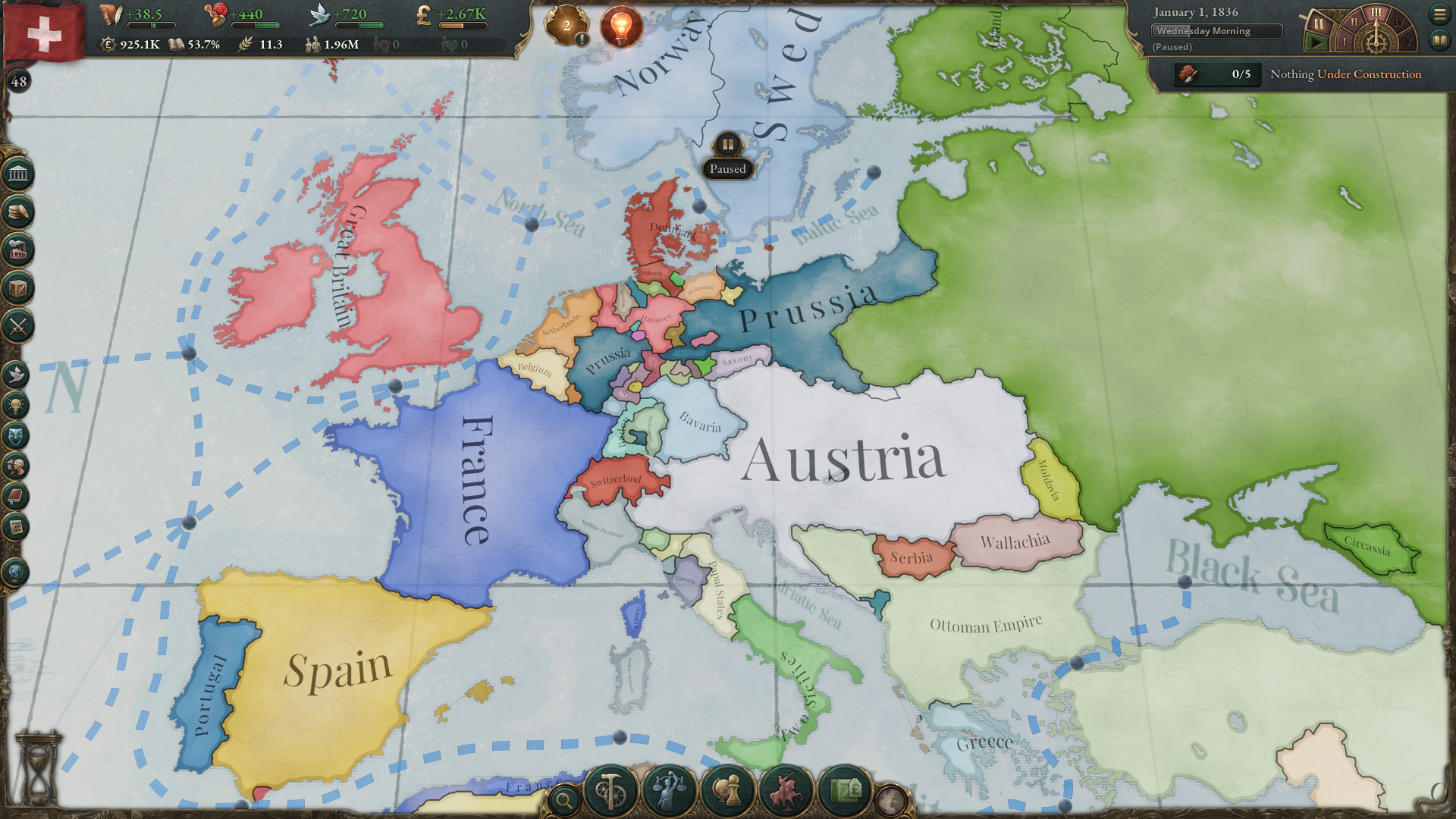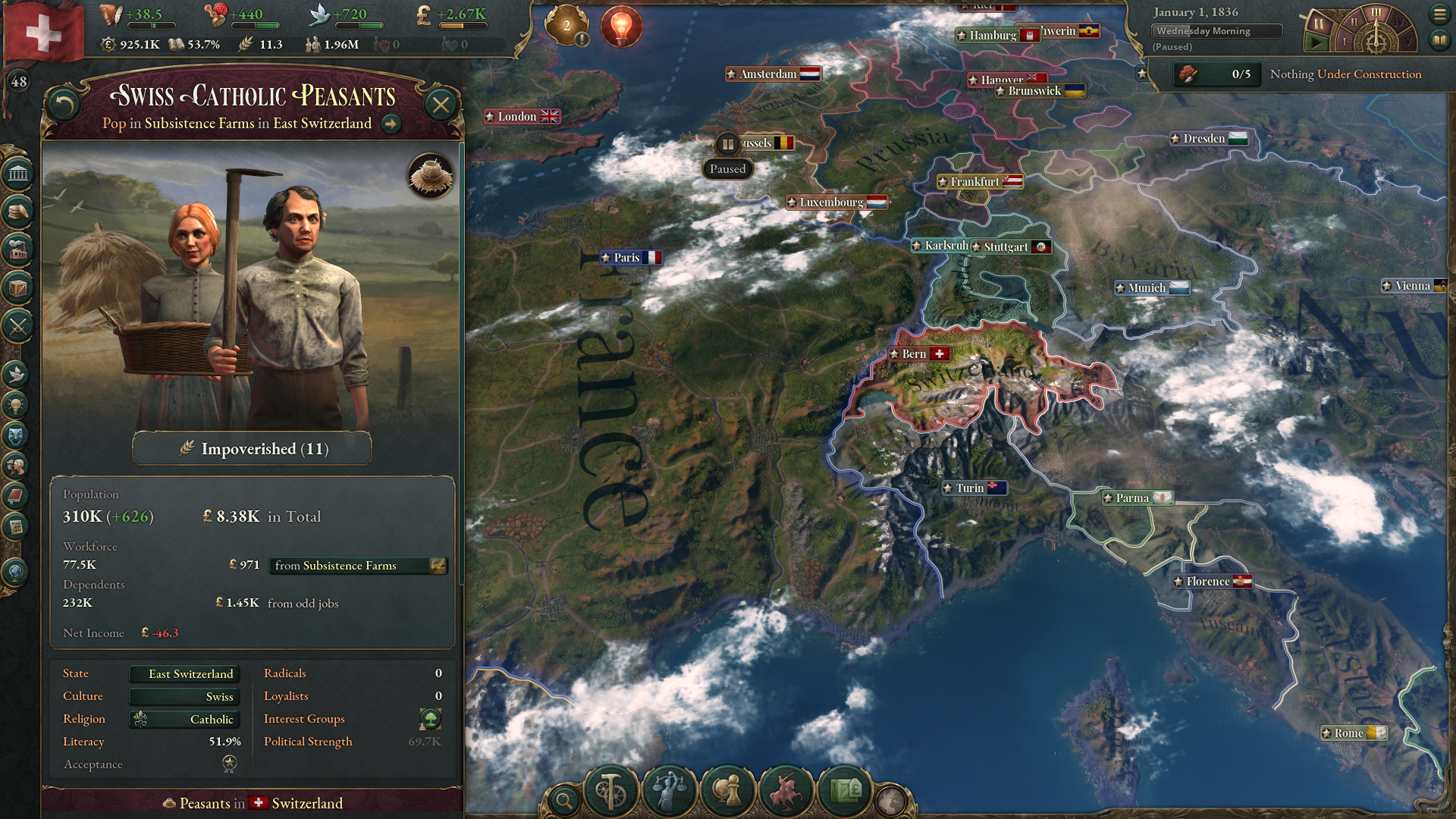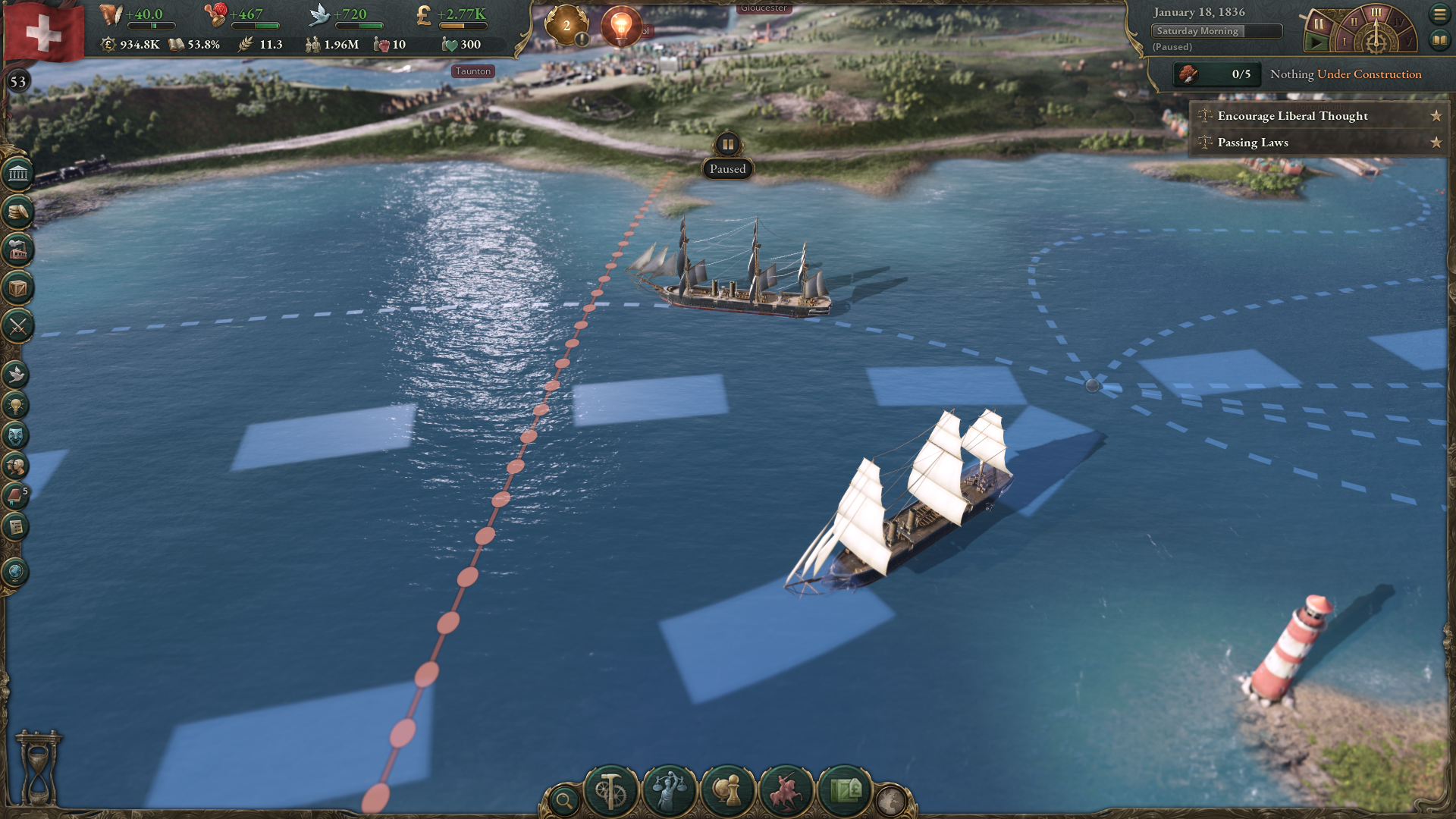The year is 1881 and I’ve turned the islands of Hawaii into an anarchist paradise that long ago disposed of the king. Our industries are modest, but they are all owned by the workers, giving us one of the highest standards of living in the world. For the most part, we did this without firing a shot.
Victoria 3 is, even more than its 2011 predecessor, a grand strategy game about shaping a society. Covering the years from 1836 to 1936 on a highly detailed world map, it models every single individual person alive at the time. That might sound absurd, but it’s not an exaggeration. They’re broadly organized by culture, religion, and profession into groups called “pops” that all get their own 3D portraits, but when you see that there are 4,361 Anglo-Canadian Protestant Machinists in Saskatchewan, that’s not an abstracted figure. The Clausewitz engine is keeping track of all of those people, from their birth rate to literacy level to political preferences.
If characters are the core of Crusader Kings 3, pops are the core of Victoria 3. Not only do you need them to plow your fields, fight your wars, and work in your textile mills, they exert their influence on the political balance of your nation. At least, the educated ones do. And as the 1800s roll on, more and more of the lower and middle classes will become socially aware and politically active. You can certainly try to slow that down by passing draconian censorship laws and making schools only available to the wealthy but, as a certain Romanov learned in real life, you hold back the tide of history at your own peril.
Working with or against the popular will to build your ideal society is one major half of the central gameplay. Early on, most countries are controlled by powerful landowners who exert the lion’s share of the influence by simply having the most money. There are multiple sources of political clout, but even in a pure democracy, cold hard cash will always be one factor—lobbyists cut deals and bribes change hands regardless of how the ballots fall.
There is a lot you can do to nudge things in a more egalitarian direction, perhaps starting with extending the vote to all landowners, then to the heads of households, then to all adult men, and eventually to women. Moving people out of the fields and into the factories changes the equation, too. This will slowly erode the power of the old aristocracy. But they will fight these laws every step of the way to preserve their interests, and may even start a civil war if you try to pass too many reforms too quickly. And their every economic loss is often a gain for the rising capitalist tycoons.
Conflict of interest

Trying to go straight from an absolute monarchy to a parliamentary republic in 1836 is a recipe for disaster.
In this way, the main antagonists you have to struggle with are often within your own borders. Of the five or six campaigns I played, in only one did I get majorly involved in foreign wars. And it’s perfectly possible to avoid international entanglements and still have an exciting run full of drama, conflict, and intrigue. I have often tried to play Paradox’s other games without going to war, but Victoria 3 seems specifically built for it. When you try to pass a law, like establishing public schools, everyone who doesn’t like the change will try to stall it. And if they’re fed up enough, perhaps because you also recently made them start paying for a national health system and established a minimum wage, they might attempt to violently overthrow the government.
The strength of such a revolt is based on how much power the opposition still holds, so there’s a delicate dance of sneaking through moderate reforms that will gradually weaken the old guard before you push for anything more drastic. Trying to go straight from an absolute monarchy to a parliamentary republic in 1836 is a recipe for disaster. But if instead you start by abolishing levies, setting up a standing army, and allowing propertied men to elect representatives who at least nominally serve at the pleasure of the king, their base of power can die a death by a thousand cuts, eventually rendering their protests mostly toothless.
Certain types of pops are more likely to support certain interest groups, such as aristocrats mostly throwing in their lot with the landowners, and each interest group has a set of traits that determine which policies they support and oppose. A paternalistic interest group, for instance, scoffs at the idea of women being equal to men and prefers a strong guiding hand on the tiller of government. These preferences can also be influenced by characters, as well. Every interest group has a leader with an ideology of their own. The trade unions may start out relatively moderate but, as new ideas spread within your borders, they may come to be led by a socialist or a feminist leader pushing for more radical changes. It’s certainly possible to try and keep a very conservative monarchy until the endgame, but it becomes increasingly harder to do as more people become literate and distant universities spread ideas like egalitarianism and anarchism.
Workshops of the world

As the lower classes become more literate, and especially if they hear about this new craze called socialism, the minimum standard of living they expect to maintain will continue to rise.
The other reason it’s a hindrance to stay rooted in the past is that you’ll fall behind in the second major arena of Victoria 3: the Industrial Revolution. As your campaign opens, most people in the world are illiterate peasant farmers working in subsistence agriculture, barely producing enough to provide for themselves. It’s a state of affairs that pleases and benefits the aristocracy, but leaves little room to grow your economy with the many wondrous inventions that will come about in the next 100 years—from the cotton gin to railroads to radios.
Taking advantage of these modern marvels will require you to build schools and universities, teaching your peasants how to become machinists and engineers, as well as building coal mines, steel mills, and shipyards. There are dozens of basic, luxury, and industrial goods that all have dynamic prices based on supply and demand within your country’s market, which may include multiple sovereign states via a customs union. Producing or importing more of any given resource lowers the price, which will also improve the standard of living for all of your pops as they can afford more on the same salary. More supply also makes your domestic industries producing those goods less profitable though, which may lead to the workers in certain factories becoming poorer or being laid off, so it’s always a balancing act.
At the beginning, only the very wealthy will expect to have nice things like wine and luxury furniture. But as the lower classes become more literate, and especially if they hear about this new craze called socialism, the minimum standard of living they expect to maintain will continue to rise. A factory laborer in 1920 might be significantly richer than his great-great-grandfather who was a farmhand in 1840, but he won’t be content with his lot in life as he’s read enough to understand how the system is rigged in favor of the rich, which may lead him to become a radical and demand reforms like a minimum wage or workplace safety regulations. The industrialists who own the factories will, of course, oppose this. It’s a very direct, no-nonsense way of modeling the causes of class conflict, and one that ultimately works better and feels more authentic than Victoria 2’s abstract “consciousness” system.
Drums of war

That isn’t to say you can’t play this as a conquest-heavy map-painting game. It’s just not the default. And war plays out much differently than in other grand strategy games, as you don’t actually move units around manually. Rather, you assign generals—characters with their own traits, quirks, and tendencies—to fronts, and give them an order to attack, defend, or stand by. The war will then play out mostly on auto-pilot, with most of your ability to influence things driven by keeping your arms industries churning, inventing new methods of warfare like aerial reconnaissance and early tanks, and reforming your army to better meet your needs. It’s definitely not the strongest plank of Victoria 3, but it does the job.
Victoria 3 is a breathtakingly ambitious simulation unlike anything that’s come before. There are some places where it becomes cumbersome due to the complexity of all the moving parts, particularly when it comes to the economy. But I could hardly drag myself away to do anything else for the 10 days I got to play it, and look forward to many more revolutions to come when it releases October 26.

